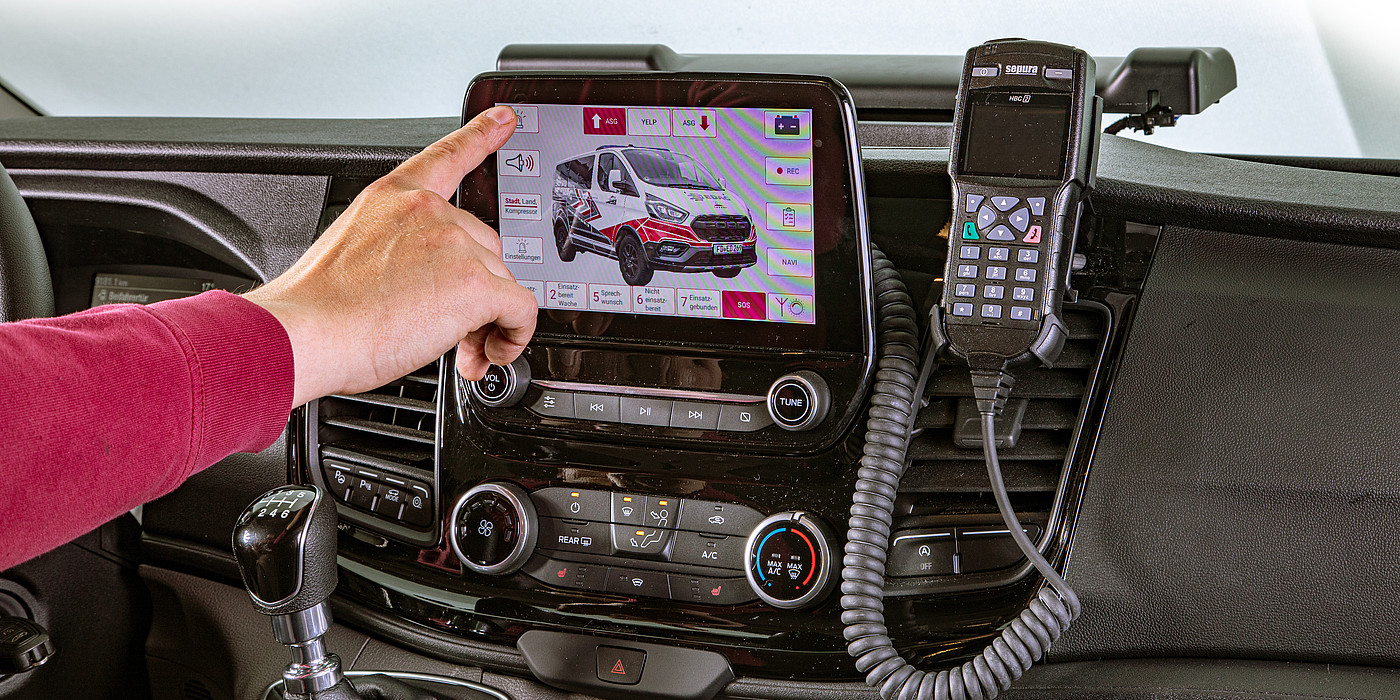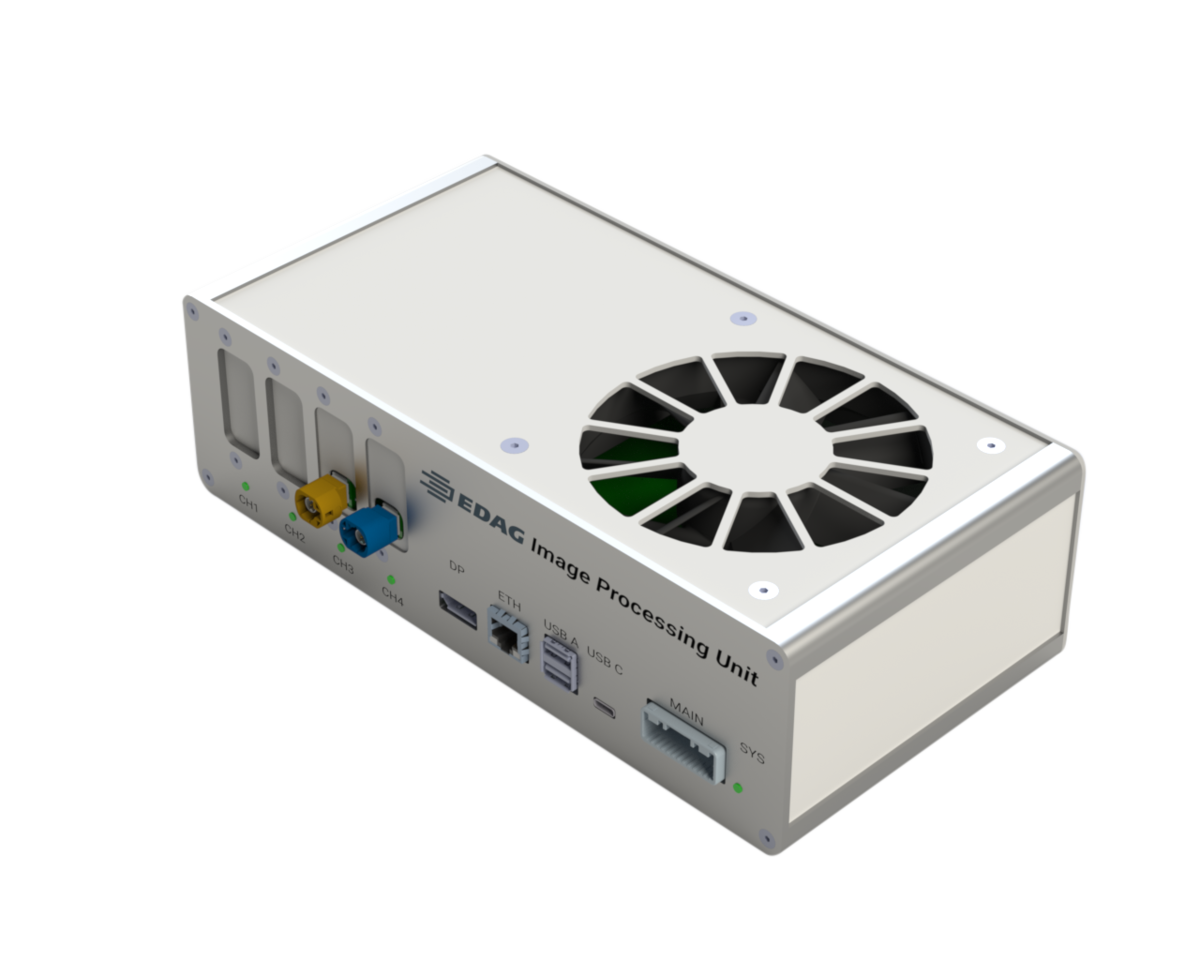
Since 2012, the EDAG Group, the world's largest independent engineering service provider in the mobility industry, has been developing its own image processing systems – also known as image processing units (IPUs) – in the electrics/electronics division. With these products, the company offers a platform for integrating individual HMI (human-machine interface) designs from external sources into existing vehicles and visualizing real time image and video signals in the vehicle displays. The EDAG Group is today presenting the IPU-NG, the latest generation of its image processing systems. Connected between the main unit and the display, the IPU-NG projects either the usual vehicle functions or the data for the additional equipment installed in special and emergency vehicles, for instance the flashing blue lights and stop signal unit, onto the integrated display. With the greatly increased computing power of the IPU-NG, customers can from now on also create their own user interface, which can easily be controlled via the touchscreen display installed as standard.
EDAG's next generation IPU is a technical platform that can be used for a wide variety of application scenarios and customer groups. For complex prototype vehicles, the IPU-NG is a quick and easy solution by means of which the measuring equipment installed can be switched and operated on the existing display surfaces. Another application from the exhibition sector is the integration of individual designs and contents with existing controls and indicators for show cars. In addition, the IPU-NG can be used in special-purpose and emergency vehicles.
For almost 30 years, the EDAG Group's competence center for special-purpose and emergency vehicles has been accompanying customers through the complete development process from the production to the conversion of vehicles. In close coordination, the Electrics/Electronics division developed the new generation IPU for use in special-purpose and emergency vehicles.
Currently, it is usual for several external devices to be used to operate both radio and signal systems, and navigation and control center communications. This will now no be longer necessary because in terms of size, brightness and sharpness, the existing screen is on a par with the displays that have so far been installed. Often, emergency vehicles are leased for just a few years and regularly replaced by newer models. Vehicles that have been withdrawn are converted back to their original state, so they can continue to be used as "normal" automobiles. Any additional display or other controls in the cockpit must be removed, drill holes sealed, and the dashboard completely replaced. Not only does this push up costs, it also extends conversion time – both when the vehicle is purchased, but also when it is returned.
On top of this, people driving special-purpose and emergency vehicles are often exposed to extremely stressful situations. The system must be up and running in a matter of seconds. Two displays in the center console area complicate procedures and make operation more difficult for drivers. The reduction to the existing display helps to ensure that the field of vision is no longer restricted, and that further controls can be found more quickly. In addition, EDAG has developed a graphical user interface specially tailored to the needs of the emergency services. The user interface is fully customizable. In addition to customization of the individual CI, the underlying operating concept can also be adjusted to meet customer requirements. In this field, the development team works with psychologists and HMI specialists to continuously optimize the user experience.

Currently, the IPU-NG presents a high-performance platform from the field of vehicle development, which, with its modular structure, can be adapted to different displays. Even with the same standards - FDP-Link, GMSL and APIX for instance - sometimes different protocols or even physical interfaces need to be operated.
Every IPU-NG variant that can be approved for a vehicle is an OEM-specific derivative of the technology platform. As a result, the functions available and the modules required for these are individually tailored to meet the requirements defined in the project concerned. This makes the overall solution less complex, leaving it less open to attack, by hackers for example. The high functional safety and cybersecurity requirements, which carry a great deal of weight in the approval process, are met in full by each of the IPU-NG derivatives.
In many cases, there is no longer any need to add expensive, complex displays – production vehicles are often already fitted with equipment that meets the requirements for controlling the additional functions of special-purpose and emergency vehicles. The innovative, modular platform provides the flexibility necessary to adapt it to the technical conditions. In the future, this will enable police and rescue vehicles, company fire service or municipal utility emergency vehicles to be equipped at lower cost and in less time, and then reconverted back again at the end of their lifecycles.
"We are proud that our IPU has reached the next stage of its development," says Stefan Fuchs, Product Manager at EDAG Engineering GmbH. "The new generation of our innovative product brings simplicity to the complex world of special-purpose and emergency vehicles. Throughout, we work in close cooperation with users, vehicle manufacturers and equipment suppliers, to be sure of always delivering optimum performance and user-friendliness. We have already successfully implemented one derivative of the special-purpose vehicle IPU for a well-known customer."